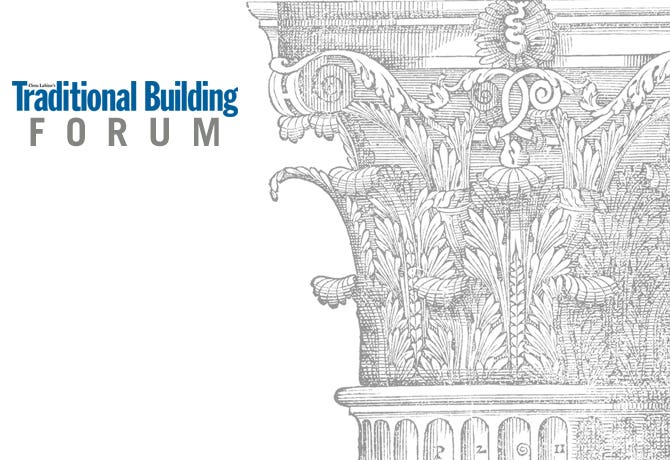
The Forum
The 20-Acre Rule Myth
One of the most insidious strictures of the conventional wisdom mandates that any new church needs 20 acres. This 20-acre rule reminds me of the 65-ft. rule that some experts claim requires us to build churches in the round. The theory is that people seated more than 65 ft. away from the altar cannot see very well, and therefore cannot participate in the liturgy.
Where to find 20 acres at an economical price? Why, the cornfield, of course. The reasons given for the necessity of a large tract of land are playing fields, convenient parking, and future growth. Yet these factors should not be seen as the primary goals in building a house of God, but should be balanced with the rich history of churches built in the midst of our towns and cities.
To put the 20-acre rule into context, consider that a traditional parish church in a small town with 800 seats, a grade-school, a playground, a rectory, and on and off street parking typically takes up three to six acres. Surprisingly, one of the most well known and largest of American cathedrals, Saint Patrick's, sits on a block in Manhattan of only two acres.
The reality is that 20 acres is the equivalent of a small college campus – for instance, "God Quad" at Notre Dame includes the Basilica of the Sacred Heart, the Golden Dome, and seven other buildings. In fact, the greatest church in all of Christendom, Saint Peter's Basilica in Rome, sits on only nine acres while its piazza takes up an additional nine acres. Twenty acres is certainly huge, but what are good reasons for not building in the cornfield?
First, by placing the church out in the cornfield the parish gives up its role in the public square. In historic cities and towns, a church is a beacon of hope and a place of conversion. In locating outside of town the church inadvertently becomes a privatized institution like a country club. This is the architectural equivalent of hiding its light under a bushel. The parish also gives up its physical role as leaven in a neighborhood. The awareness of the needy and the ability to serve the poor and the un-churched on a daily basis dissipates in proportion to the distance from the center of town. Alternatively, the presence of a church improves the safety and the harmony of its neighborhood.
Second, if an existing parish decides to move out of town it abandons holy ground. Our churches are the sacred places in which generations of the faithful have been baptized, married and buried. Furthermore, a schism between past and present is often accompanied by a physical splitting up of the parish. For instance, the school might remain in the village while worship moves to the fringe. This is particularly disruptive to the interaction between church and school that makes for a vibrant parish. After all, the school may not move out to the new land for decades.
Third, building out in a cornfield normally costs more than building in town. Start with the cost of the land. Then add the cost of providing water, sewer, storm-water retention, streets and parking. The additional expense of building on virgin farmland can quickly cost as much as a million dollars more than building in town where utilities and drainage already exist – not to mention the sustainability issues inherent in paving over local agriculture.
So, if you have an existing parish and the experts tell you that you need to buy a cornfield, buck the conventional wisdom and consider the benefits – communal, spiritual and monetary – of staying in town. Alternatively, if you are founding a new parish, consider being part of a village, even locating in a New Urbanist community (which often have favorable land and parking costs), or at least try to create a spiritual place within suburbia by being integrated with the community. More than parking and playing fields, your parish should be a light to the nations and a city on a hill. TB
Duncan Stroik is an architect based in South Bend, IN, and an associate professor at the University of Notre Dame School of Architecture. His teaching, research and practice stem from a commitment to the principles of traditional architecture and urbanism. His most recent project, Our Lady of the Most Holy Trinity Chapel at Thomas Aquinas College, (see Traditional Building magazine, June 2011) embraces the best of Classical and Early Californian design. Stroik can be reached at 574.631.5762 or dstroik@nd.edu. Projects can be viewed at his website: www.stroik.com.
Duncan Stroik is a professor of architecture at the University of Notre Dame, editor of Sacred Architecture Journal, with an architectural practice that focuses on sacred architecture.









